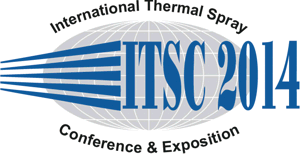
|
3925 |
|
Friday, May 23, 2014, Hall H1 2:20 PM Ceramic Coatings 2 |
|
Investigation of oxide formation on sliding interfaces of WC-CoCr in relation to friction and wear |
|
Johan Andre Wesmann* / Norweagian University of Science and Technology. AkerSolutions., Norway Dag Twist/ Akersolutions, Norway Jan Herland/ Akersolutions, Norway Roy Johnsen/ NTNU, Norway Nuria Espallargas/ NTNU, Norway |
|
In offshore oil and gas production there is a need to control the flow of fluid from the well. This is done by placing a x-mas tree on top of the well that contains several valves, usually of gate and seat configuration, for controlling the well. To withstand wear during opening and closing of the valve, sealing interfaces are usually coated with HVOF WC-CoCr. As friction dictates the opening and closing forces of the valve, sound knowledge of the mechanisms taking place during sliding will aid valve design. There has been conducted numerous investigations of friction and wear properties of thermally sprayed WC-CoCr coatings in the past. Reported friction coefficients lay in the range of 0.3-0.6 and low friction coefficient have been reported to be a result of WO3 oxide formation in the sliding interface. This oxide is reported to give low friction coefficients and be beneficial during sliding. Although this is the common explanation of the friction mechanism during sliding for this type of coating, not many detailed investigations on the oxide composition and type have been done. In this investigation, friction mechanisms of thermally sprayed WC-CoCr coatings have been investigated during sliding contact in air, nitrogen gas and distilled water. The effect of nitrogen, air and temperatures up to 200 C have been elaborated based on investigation of the surfaces after tribological experiments by EDS, SEM and XPS. XPS is a powerful tool giving information of the binding energies of the electrons in the surface and thus information of the chemical composition of the oxides on the surface. With this information, we hope to provide more knowledge on how the chemical changes on the sliding surface contribute to friction during sliding of thermally sprayed WC-CoCr. |